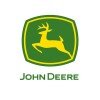CAE Analyst
CAE Analyst Interview Questions and Answers
Asked in GNS Engineering India Pvt Ltd

Q. Can we perform non-linear analysis in OptiStruct?
Yes, non linear analysis can be done in Optistruct.
Optistruct supports non linear analysis using advanced solver capabilities
Non linear material behavior, large deformations, and contact can be simulated
Examples include crash simulations, plasticity analysis, and nonlinear buckling analysis

Asked in Eleno Energy llp

Q. Tell me about the regulations you have completed.
I have completed regulations related to automotive safety and emissions.
Completed regulations related to vehicle safety standards set by NHTSA.
Completed regulations related to emissions standards set by EPA.
Familiar with regulations related to crash testing and airbag deployment.
Stay up-to-date with any changes or updates to regulations in the automotive industry.

Asked in Satyam Venture Engineering Services

Q. What is mean by stress,strain,stress strain curve
Stress is the force applied to a material, strain is the resulting deformation, and stress-strain curve shows the relationship between them.
Stress is the force per unit area applied to a material.
Strain is the measure of deformation or change in shape of a material.
Stress-strain curve illustrates the relationship between stress and strain for a given material.
It helps in understanding the material's mechanical properties, such as elasticity, yield strength, and ultimate stren...read more
Asked in GNS Engineering India Pvt Ltd

Q. How much knowledge do you have about Abaqus?
I have extensive knowledge and experience using Abaqus for finite element analysis.
I have been using Abaqus for several years in various engineering projects.
I am proficient in creating complex finite element models and analyzing results using Abaqus.
I have experience with different modules of Abaqus such as Explicit, Standard, and CFD.
I have worked on projects involving structural, thermal, and dynamic analysis using Abaqus.

Asked in John Deere

Q. What is the difference between linear and non-linear analysis?
Linear analysis assumes linear relationships between inputs and outputs, while non-linear analysis considers non-linear relationships.
Linear analysis assumes small changes in inputs result in proportional changes in outputs.
Non-linear analysis considers large changes in inputs may result in disproportional changes in outputs.
Examples of non-linear behavior include material yielding, large deformations, and contact interactions.
Asked in GNS Engineering India Pvt Ltd

Q. What are the capabilities of OptiStruct?
Optistruct is a powerful finite element analysis software used for structural analysis and optimization.
Optistruct is known for its advanced capabilities in structural analysis and optimization
It can handle complex simulations involving linear and nonlinear analyses
Optistruct offers various optimization algorithms to improve design performance and reduce weight
It is widely used in industries like automotive, aerospace, and manufacturing
Optistruct can help engineers in designi...read more
CAE Analyst Jobs




Asked in Intelizign Lifecycle Services

Q. What is degree of freedom?
Degree of freedom refers to the number of independent variables or parameters that can vary in a system.
Degree of freedom determines the number of ways a system can move or change.
In mechanics, it represents the number of independent coordinates needed to describe the position of a body.
In statistics, it refers to the number of values in a calculation that are free to vary.
For example, a particle in three-dimensional space has three degrees of freedom, corresponding to its x,...read more


Q. Simulate y = ax^2 + bx + c in Simulink.
Use Simulink to simulate a quadratic equation y = ax^2 + bx + c
Create a Simulink model with a Math Function block to calculate y = ax^2 + bx + c
Use Constant blocks to input values for a, b, and c
Connect the blocks appropriately and run the simulation
Plot the output to visualize the quadratic equation
Share interview questions and help millions of jobseekers 🌟



Q. What is your intuition behind the PID components P, I, and D?
Intuition in PID components P, I, D
Proportional (P) component responds to the current error signal
Integral (I) component eliminates steady-state error over time
Derivative (D) component predicts future error trends and helps stabilize the system
Tuning these components requires understanding the system dynamics and desired response
Example: Increasing P can make the system respond faster but may introduce oscillations
Example: Increasing D can dampen oscillations but may lead to ...read more


Q. OOPS concepts in C++
OOPS concepts in C++ include encapsulation, inheritance, polymorphism, and abstraction.
Encapsulation: Bundling data and methods that operate on the data into a single unit (class). Example: class Car { private: int speed; public: void accelerate() { speed++; } };
Inheritance: Creating new classes based on existing classes. Example: class ElectricCar : public Car { public: void charge() { cout << 'Charging...'; } };
Polymorphism: Ability to present the same interface for differe...read more
Interview Questions of Similar Designations
Interview Experiences of Popular Companies








Reviews
Interviews
Salaries
Users

















